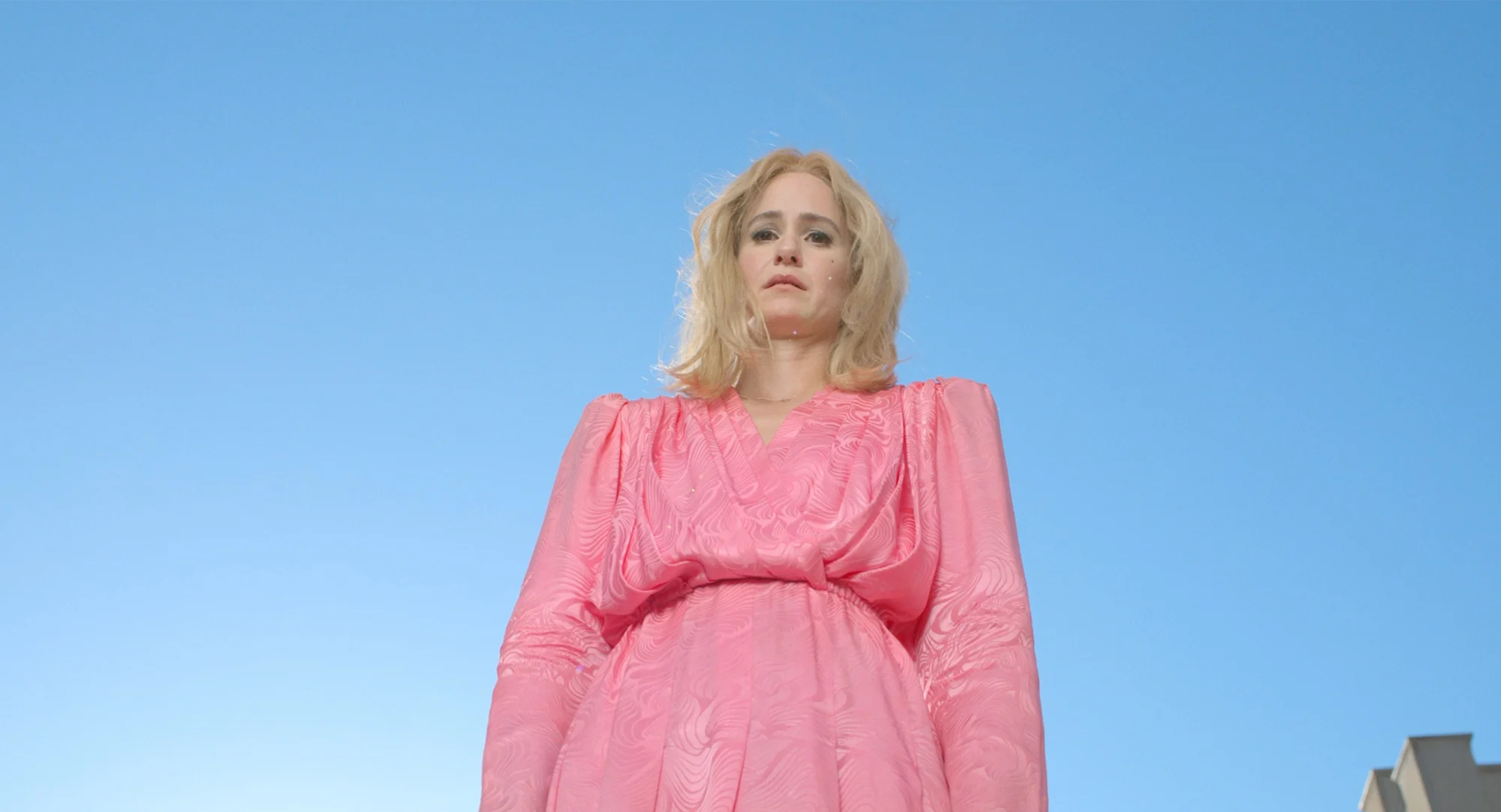
The Mountain — Watch Alex Prager's new film “Part One: The Mountain”
Still from Part One: The Mountain by Alex Prager
Watch Alex Prager's new film “Part One: The Mountain”
The line between reality and fiction is ever blurred in our evolving world. Alex Prager’s new work is firmly in the latter camp, embracing the need “for some new stories to be told.” Alongside her new, character-focused photographs, she has also released a film called “Part One: The Mountain,” supported by WePresent. Louise Benson speaks to the prolific, curious artist about her new brand of fiction.

The pandemic has changed us. This is a statement spoken so often of late, as the world collectively reflects on the past two years, that it has become something of a cliché. For Alex Prager, an artist best-known for her startling, vividly imaginative portraits, it is a truism that she has grappled with in her latest photographic work, “Part One: The Mountain.” In the new series of surreal portraits, she suspends in mid-air her protagonists, who tumble and fall before the lens. They are lost in motion, out of control. Just how hard will they hit the ground?
“It’s about the emotional upheaval that we have all been through,” she tells me from a sun-filled garden in Florida, where she is visiting family before traveling to London for the opening of her exhibition at Lehmann Maupin. “It’s about experiencing something that’s so jarring it almost creates a convulsive reaction, emotionally and spiritually.” In her images this is brought to life, in characteristically playful Prager style, as a series of literal leaps into the unknown. The resulting photographs and accompanying short film are absurd, exuberant, and visually arresting. They are also a moving reflection on what it means to confront fear and uncertainty.
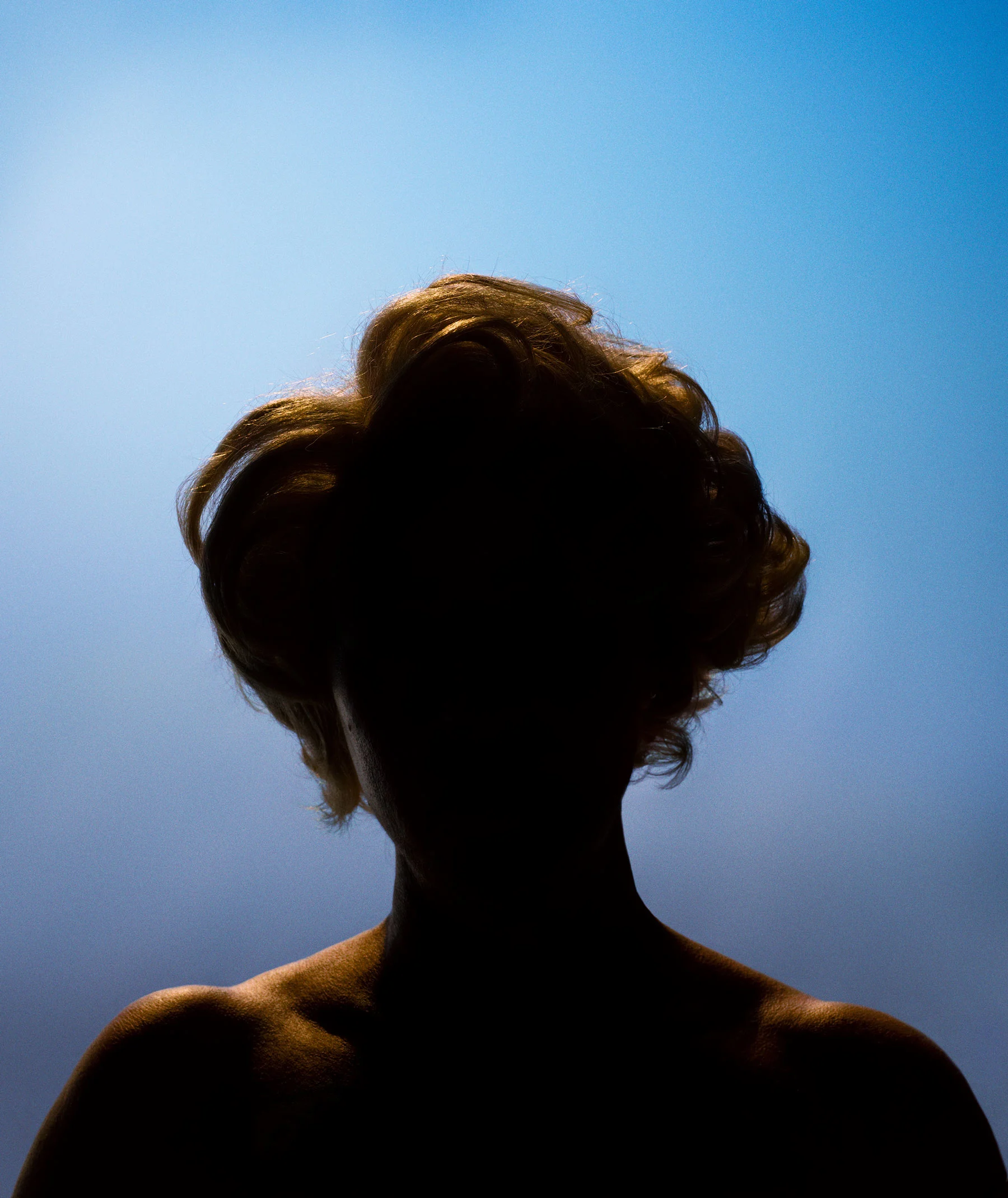
It’s about the emotional upheaval that we have all been through.
As she wryly points out, the experience of turmoil is one that humans have experienced since the beginning of civilization. “Part One: The Mountain” was created as much in recognition of this universal condition as it was in response to the last two years. Set atop a mountain, a backdrop suggestive of everything from the Ancient Greek myth of Sisyphus to Caspar David Friedrich’s painting “Wanderer above the Sea of Fog,” it conjures a site of personal transformation and wonderment that has fascinated artists and writers for centuries. “The mountain,” Prager says, “is symbolic of storytelling.”
This melding of past, present, and future runs through “The Mountain” like a smear of lipstick on a vintage dress. Prager draws upon archetypes to move beyond the here and now, conjuring characters whose rich symbolism expands their frame of reference. There is the cowboy and cowgirl, clad in dusty boots with hats askew. The nymph in nothing but a pair of pure white socks. A vixen in a sequined gown, playing cards fluttering around her as if betting on her own possible futures. “I think it’s time for some new stories to be told,” Prager says. “You almost hear the words, ‘Once upon a time…’ when you see an archetype, and I wanted to evoke that feeling.”
At the heart of all Prager’s work is the restless tide of human emotion. She captures this in portraiture that evokes a wide range of feelings, from a lover’s fear of leaving a relationship to the fleeting joy of blowing a perfect bubble of gum. She is an avid people-watcher, observing our quirks, our hopes, our quiet frustrations: “The emotion is always key. If it’s not grounded in an emotional core, then it’s just going to be a superficial, pretty kind of image, and it doesn’t interest me.
“I love weaving artifice into that emotion because that’s where things get really interesting. That’s where I feel like it’s really reflective of our culture and how people exist in real life.” Stage sets, elaborate costumes, hair and make-up are commonplace in Prager’s work. She works in collaboration with a large team, including a costume designer (Arianne Phillips for this project) and cinematographer (for “Part One: The Mountain” she worked with longtime collaborator Matthew Libatique).
I think it’s time for some new stories to be told.
“There’s the truth, and the fiction or fantasy,” she says. “The line gets a bit blurry, which I always think is more representative of real life anyway.” Her characters are played by professional actors and stuntmen, family members, and friends. Others she finds on the street as she goes about her day: “If someone strikes my interest, I’ll just ask them.” Prager works closely with each of them in the run-up to the shoot. “I always talk to people ahead of time and we come up with a story together. I think having their character’s story worked out makes it more their own. It definitely helps to ground it in truth.”
In Prager’s short film compiled of interviews of the characters from "Part One: The Mountain, which accompanies the photographic series, she blurs this line further in snatched vignettes, told to the camera in heartfelt bursts set against a stark black backdrop. These glimpses into the lives of her characters bewilder and intrigue, but their ambiguity ultimately invites further questions about the veracity of these tales. “There are days when you can’t imagine putting one foot in front of the other, and then you have to,” one protagonist says on-screen, her strained, pink-lipsticked smile gleaming under the bright lights. Whether these narrated anecdotes are either truth or fiction is left open-ended.
Another character, wearing thick glasses and a tie, vividly recalls pouring gasoline over an infestation of mice, only to find the flaming rodents had burst forth and were making a break for the hay barn. “That was one of those times,” he says slowly in his distinctive southern drawl, “when I knew things were going to be different from then on.” The highs and lows of life, and its tragicomic winding road, are embraced in Prager’s work like a mirrorball on a comedown. Snippets from reality blend with the artificial as perfectly as polyester.
“I love pre-production because that’s where I can really put my stamp on the characters,” she describes. “And then I just close my eyes and let it all happen.” She describes the “madness” of the day of the shoot. “That’s where the really interesting moments come in,” she says, laughing. “It’s nothing that I ever planned.” The unknown and the unexpected are central to her process. Prager is an artist accustomed to the challenges of embracing those flashes of chaos.

There’s the truth, and the fiction or fantasy. The line gets a bit blurry, which I always think is more representative of real life anyway.

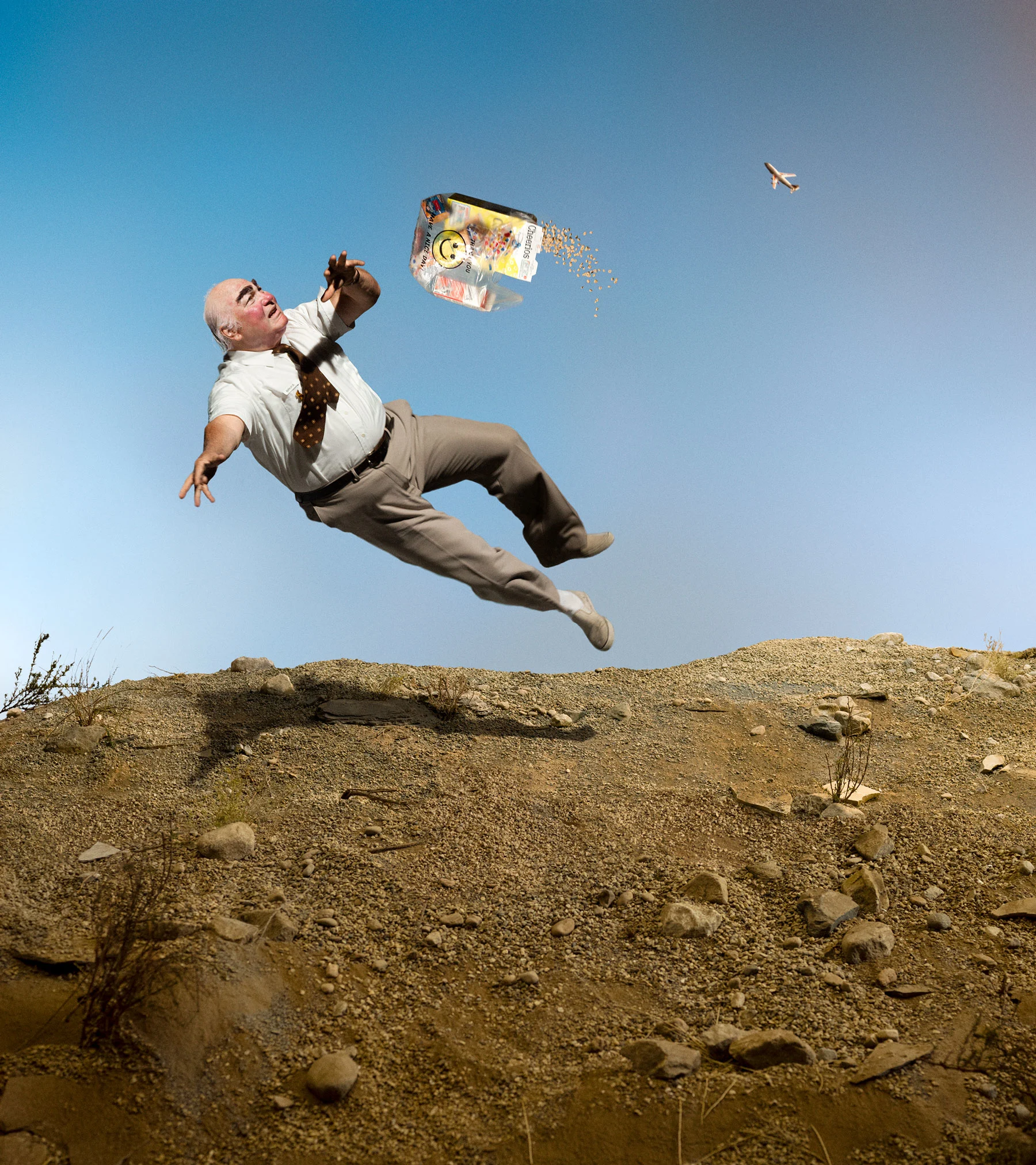
In her acclaimed images of crowds, shot in a bright color palette with nostalgic nods to the 1960s and 70s, carefully choreographed scenes conjure the many chance encounters that occur amidst the density of city life. While these images seethe with the intoxicating thrill of a momentary connection made more poignant amidst strangers, they are just as suggestive of the meetings that pass us by entirely. “With the crowds, I would always approach them as individuals isolated in their own psychology. It’s always about what’s going on emotionally inside someone, whether they’re in a large crowd or by themselves.”
In “Part One: The Mountain,” each subject is photographed alone—a departure from Prager’s previous work. But, as she explains, in this new series she hopes to address the disconnection and distrust between people that has been sown during the pandemic. “Everything got so disjointed, and people just got so angry with each other,” she says. “I wanted to take the first step or a step towards understanding each other again, and I think one really great way to do that is by getting people to look at each other and see each other.”
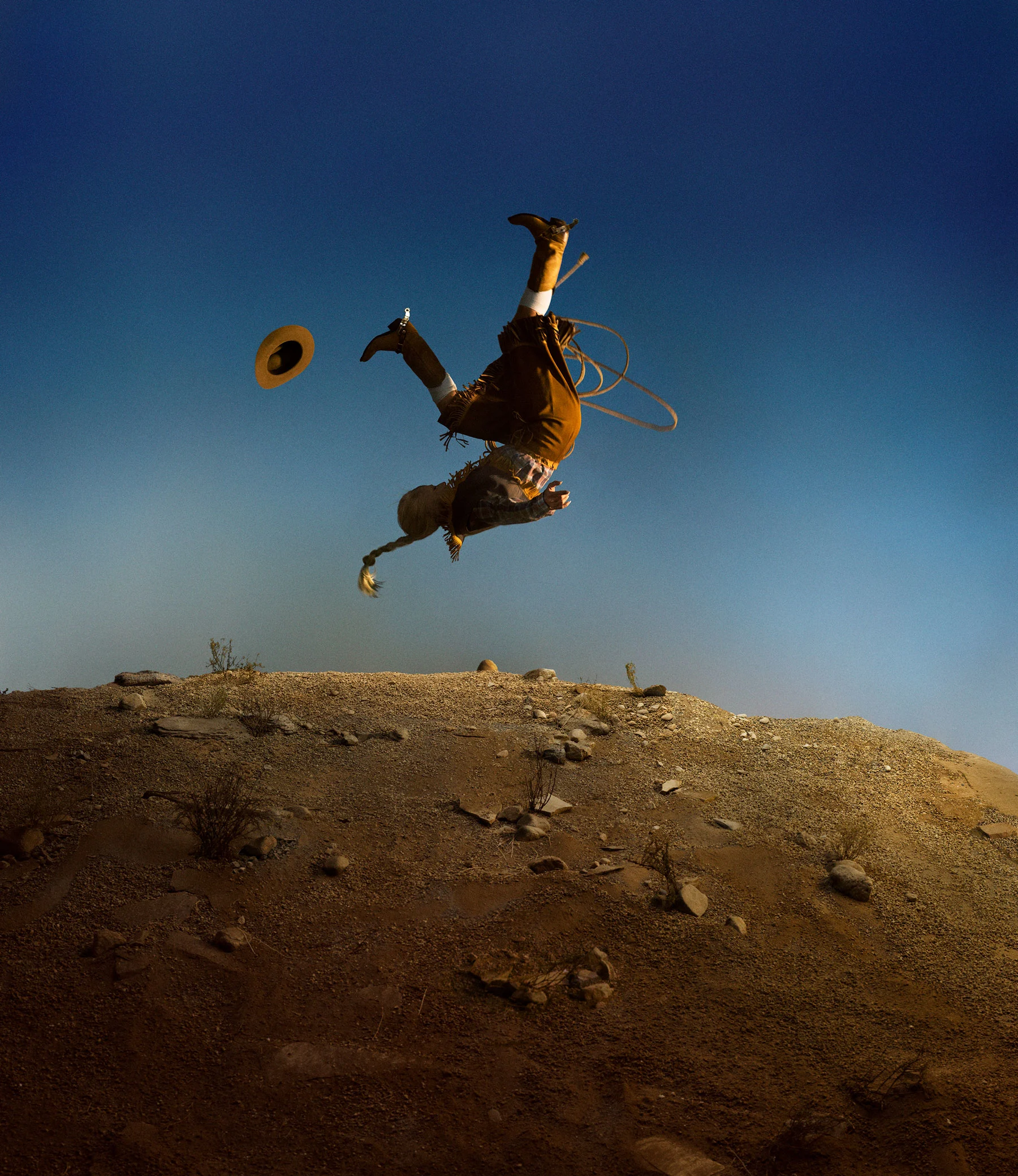
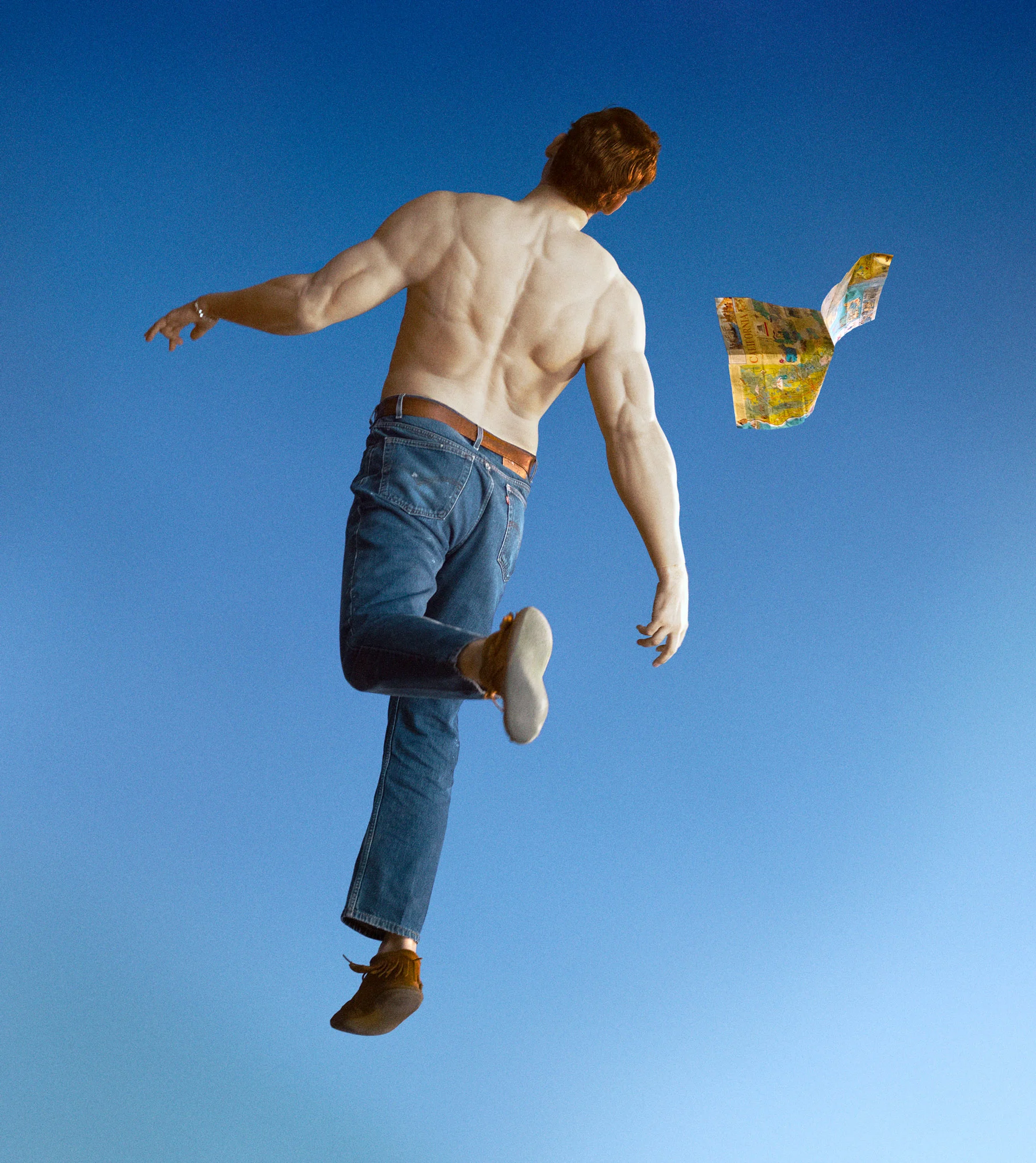
The highs and lows of life, and its tragicomic winding road, are embraced in Prager’s work like a mirrorball on a comedown. Snippets from reality blend with the artificial as perfectly as polyester.

August Sander’s “People of the 20th Century” and Irving Penn’s “Small Trades”—“some of the best portrait series ever made”—were important inspirations for “Part One: The Mountain.” Their use of the camera as a tool for democratization interests Prager, bringing together people from all walks of life in front of the lens to uphold a shared sense of humanity. She first considered photographing people all across America (“I was going to go on a road trip in an Airstream”), and “The Mountain” evolved from these early ideas. “The classical portrait is a great tool to get people to look at one another and hopefully find connection.”
There is an undeniable filmic quality that imbues all Prager’s work, as if she has clicked the shutter in the midst of an ongoing narrative. Where is that blonde-haired woman, with only her lipsticked mouth visible in the car mirror, driving to? And what led to another woman’s tumble through the air, her purse spilling its contents out against the hazy blue sky? We are given just a momentary glimpse into their world.
I wanted to take the first step or a step towards understanding each other again, and I think one really great way to do that is by getting people to look at each other and see each other.
Our conversation turns to cinema. Prager is an avowed fan of Quentin Tarantino, pointing to his over-the-top, fantastical aesthetic and B-movie narrative sensibility. “His characters are always really strong and believable, and especially his female characters,” she argues. “I know there’s a lot of controversy about that, but I think his female characters are complex and can be very brutal, which I love.” “The Red Shoes” by Powell and Pressburger is one of her all-time favorites. Paul Thomas Anderson is “such a truthful, honest storyteller.” She is drawn to the “almost-improvised emotional conversations” of the films of Robert Altman and John Cassavetes, both of whom frequently worked with untrained actors. “It feels so real.”
That tension between fiction and reality shivers throughout Prager’s own work, a faultline in the foundations shaped by the various lies that we each invariably tell ourselves. In “Part One: The Mountain,” this is taken to a fantastical extreme where anything is possible. Yet the underlying pull of the everyday tugs at her images, inevitable as gravity itself, grounding them in the tender recognition of our own humanity. She throws her stories up in the air only to watch them fall back down. What remains up to us is where, exactly, they will land.


